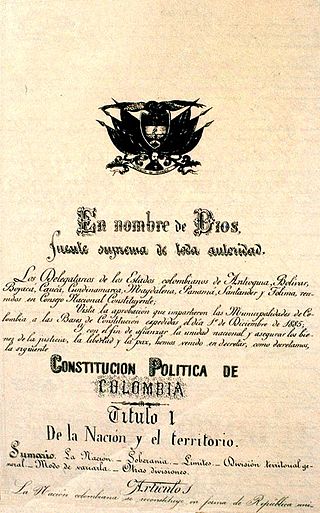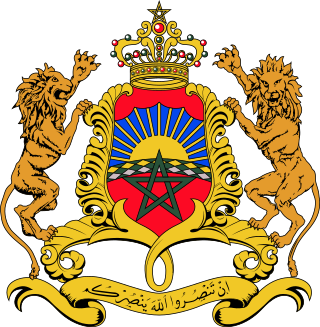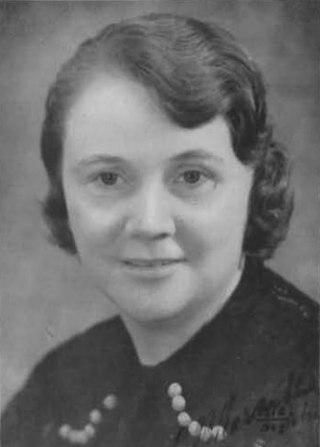Women's suffrage in Colombia was introduced in 1954. [1] The reform was introduced during the military dictatorship of Gustavo Rojas Pinilla.
| Part of a series on |
| Feminism |
|---|
 |
Women's suffrage in Colombia was introduced in 1954. [1] The reform was introduced during the military dictatorship of Gustavo Rojas Pinilla.
The Constitution of the Province of Velez explicitly granted women suffrage in 1853, but the right was rescinded when the Velez Constitution was abolished in 1855. [2] The women's movement in Colombia started late compared to other countries. During the 1930s, a women's movement organized. Women were granted the right to keep their legal majority after marriage in 1932 and attend university in 1934, and feminists started to lobby the Parliament members to lift the issue of women's suffrage. The suffrage movement was mainly focused around the two biggest cities and consisted of well educated elite women from Liberal and Socialist families from the middle and upper classes.
When a female lawyer was rejected from her quest to become a judge in 1944, women organized in the Liberal Union Femenina de Colombia (UFC) in 1944 and the Socialist Aliazna Femenina in 1945 to demand women's suffrage. In the public debate, the matter was long a question of only suffrage and not the right to be elected. The Liberal and Socialist party supported the reform. The conservatives initially did not, however the Catholic church came to support it after the Pope had claimed that women, whom he trusted to be conservative, would be a good force in the fight against Communism if granted suffrage. [3]
Women's suffrage is the right of women to vote in elections. In the beginning of the 18th century, some people sought to change voting laws to allow women to vote. Liberal political parties would go on to grant women the right to vote, increasing the number of those parties' potential constituencies. National and international organizations formed to coordinate efforts towards women voting, especially the International Woman Suffrage Alliance.

Women's suffrage – the right of women to vote – has been achieved at various times in countries throughout the world. In many nations, women's suffrage was granted before universal suffrage, in which cases women and men from certain socioeconomic classes or races were still unable to vote. Some countries granted suffrage to both sexes at the same time. This timeline lists years when women's suffrage was enacted. Some countries are listed more than once, as the right was extended to more women according to age, land ownership, etc. In many cases, the first voting took place in a subsequent year.

Women's legal right to vote was established in the United States over the course of more than half a century, first in various states and localities, sometimes on a limited basis, and then nationally in 1920 with the passing of the 19th Amendment.

The Colombian Constitution of 1886 was the constitution that remade the United States of Colombia into the Republic of Colombia, and replaced the federal republic with a unitary state. Following the Civil War of 1884, a coalition of moderate Liberals and Conservatives, led by Rafael Nuñez, ended the political period known as "the Radical Olympus", repealed the Constitution of Rionegro (1863), and substituted it with the constitution of 1886. From then on, the country was officially known as the Republic of Colombia. The Constitution of 1886 was the longest lasting constitution in the history of Colombia, eventually being itself replaced by the Constitution of 1991.

Parliamentary elections were held in Morocco on 25 June 1993, having originally been scheduled for October 1990, but postponed due to issues over the future of Western Sahara and a referendum on a new constitution, which took place in 1992. The number of directly elected seats increased from 204 to 222, whilst the number of indirectly elected seats rose from 102 to 111. The indirectly elected seats were chosen on 17 September.

Women's suffrage in Canada occurred at different times in different jurisdictions to different demographics of women. Women's right to vote began in the three prairie provinces. In 1916, suffrage was earned by women in Manitoba, Saskatchewan, and Alberta. The federal government granted limited war-time suffrage to some women in 1917 and followed with full suffrage in 1918, at least, granting it on same basis as men, that is, certain races and status were excluded from voting in federal elections prior to 1960.
Women's suffrage in the Spanish Second Republic period was the result of efforts dating back to the mid-1800s. Women and men working towards universal suffrage had to combat earlier feminist goals that prioritized social goals, including access to education, political rights such as a woman's right to vote and equal wages. As a middle class developed and women gained more access to education, they began to focus more on the issue of suffrage but this was often around specific ideological philosophies; it was not tied into a broader working class movement calling for women's emancipation.
The struggle for women's right to vote in Mexico dates back to the nineteenth century, with the right being achieved in 1953.

Zdeňka Wiedermannová-Motyčková was a Moravian teacher, journal editor, and women's rights activist. Born into a family of progressive educators, she studied to become a teacher, graduating in 1886. Her Catholic education led her to more conservative values than her family's, but after teaching for several years, she began to recognize the disparities between women and men teachers, as well as those of their students. By 1898, she was publicly calling for equal pay for equal work and campaigning for equal education for boys and girls. In 1902, Wiedermannová founded and became chair of the Moravian Teachers Union, whose focus was to professionalize teaching standards. The following year, she opened a Girls' Academy in Brno, hoping later to include secondary education there. As the Austro-Hungarian Empire provided little funding for girls' education, she held lectures to provide for the operating costs of the academy. Finally in 1908, she successfully established the first girls' secondary school in Moravia.
Mona Lena Krook is an American political scientist. She is a Professor of Political Science at Rutgers University, where she is also the Chair of the Women and Politics Ph.D. Program. She studies the political representation of women, particularly gender quotas in governments and the phenomenon of violence against women in politics.
Marie Louise Emilienne Rochecouste was a Mauritian politician. In 1948 she became the first woman elected to the Legislative Council, serving until 1953.

Cornelia Razoux Schultz-Metzer was a Dutch feminist and politician who was active in the Dutch East Indies. She was the first female member of the colonial legislature, the Volksraad, where she attempted to introduce women's suffrage.
Susan Franceschet is a Canadian political scientist. She is a professor of political science at The University of Calgary. She studies the representation of women both in legislatures and government cabinets, gender quotas for the minimum representation of women in government, and the interaction of gender and public policy. She has written about women's participation in the politics of Chile.

Im Yeong-sin, also known by the English name Louise Yim, was a South Korean educator and politician. She was both the first female minister in South Korea, holding the post of Minister of Commerce and Industry from 1948 to 1949, and the first woman elected to the South Korean parliament, serving from 1949 to 1954. Yim also helped establish Chung-Ang University.
Union Femenina de Colombia (UFC), was a Colombian women's rights organization, founded in 1944. Alongside the Alianza Femenina, it was one of the two big women's organizations campaigning for women's suffrage in Colombia.
Alianza Femenina, was a Colombian women's rights organization, founded in 1945. Alongside the Union Femenina de Colombia, it was one of the two big women's organizations campaigning for women's suffrage in Colombia.
Janet Wesonga, née Tingu was a Ugandan local politician. As mayor of Mbale, she was Uganda's first African woman mayor. An Anglican, she also served on the Executive Committee of the World Council of Churches.
Karla Máchová was a Czech teacher, women's rights activist, journalist and politician. In 1908, using a legal loophole, Máchová was among the first three women to run for the Bohemian Diet.
Božena Zelinková was a Czech teacher and women's rights activist.